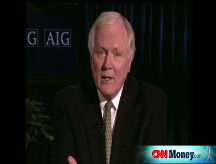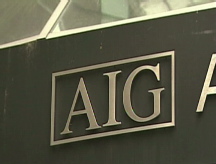AIG, Fed stemming insurer's liquidity crisis
A financing entity purchases $46.1B in troubled AIG debt securities, ending insurer's need to post additional collateral. AIG still looking to buy another $18.6B.
NEW YORK(CNNMoney.com) -- Troubled insurer American International Group moved another step closer to stabilizing its finances on Tuesday.
The company announced that a financing entity -- funded by the Federal Reserve Bank of New York and AIG -- has purchased $46.1 billion in complex debt securities insured by AIG. As part of the deal, the insurance-type contracts, called credit default swaps, were terminated.
The insurer also has agreements to purchase another $7.4 billion of these debt securities, called collateralized debt obligations or CDOs.
The move stanches some of the bleeding at the insurer, which was on the verge of bankruptcy in September because of these CDOs. As the debt securities' value declined, AIG (AIG, Fortune 500) was forced to post more collateral to prove to swaps holders it could pay them if the debt securities defaulted.
The termination of the swaps ends AIG's obligation to post additional collateral, which it could not afford to continue doing.
The creation of the financing entity was unveiled last month as part of a broader restructuring of the federal government's bailout of AIG, which originally included an $85 billion bridge loan and $37.8 billion in Fed financing.
The entity now has $15.1 billion in Fed money and $5 billion from AIG. The Fed will ultimately double its commitment.
The money will be used to buy a total of roughly $65 billion of the debt securities at their current market price, which is far below their principal value. The deal calls for the swaps holders to keep the collateral posted by AIG, which totals nearly $26 billion, according to a filing with the Securities and Exchange Commission.
In addition to this financing entity, the restructured bailout calls for the government to: buy $40 billion in preferred stock in AIG; lend the company $60 billion over five years; purchase up to $20.9 billion of AIG's short-term debt, called commercial paper, and fund a second financing entity with $22.5 billion to purchase residential mortgage-backed securities AIG had invested in in its securities lending business.
AIG is seeking to sell its sprawling global operations, which had $1 trillion in assets, to repay the government. It hopes to keep its property and casualty businesses and a majority stake in its foreign life insurance division. ![]()



